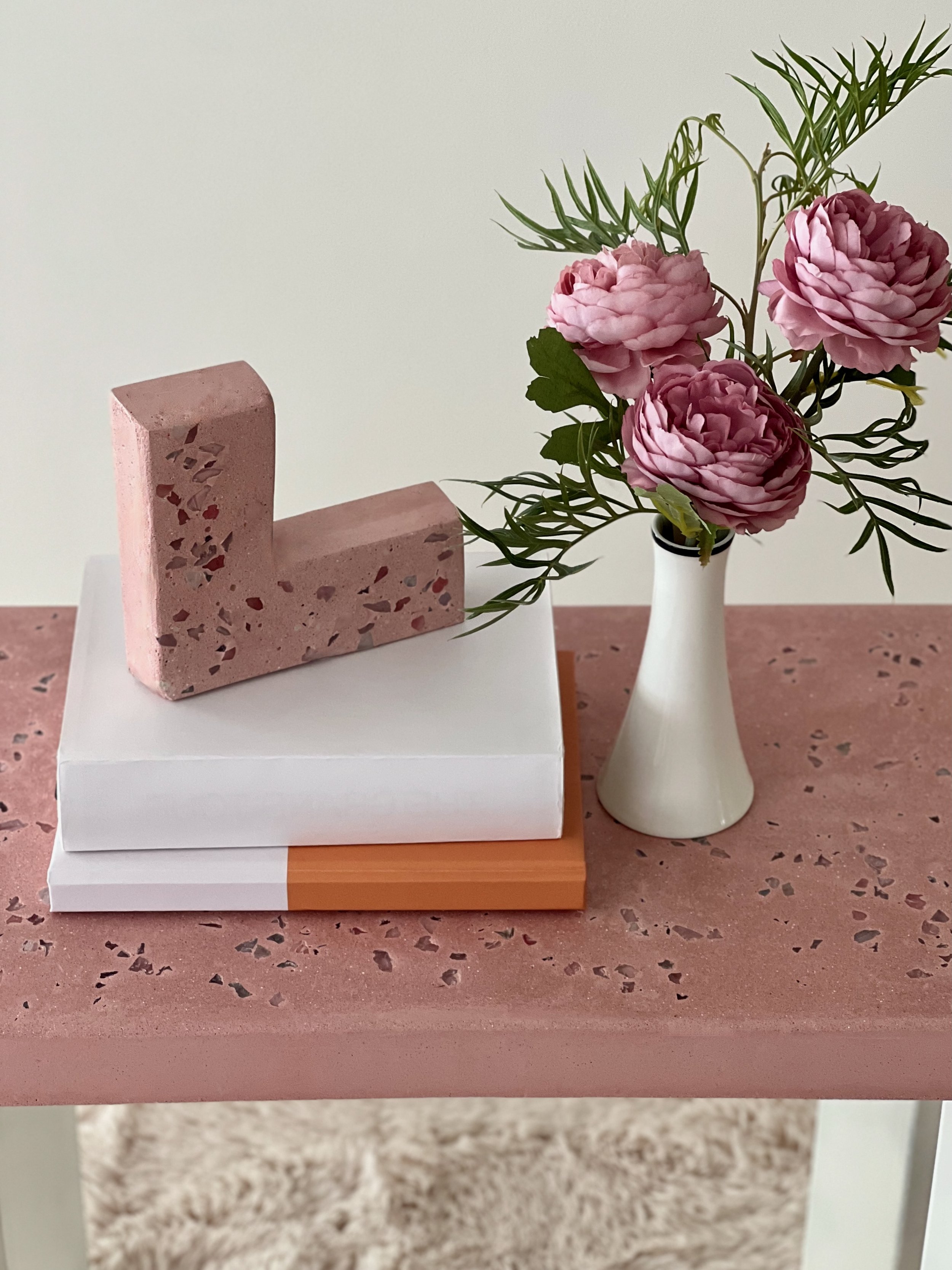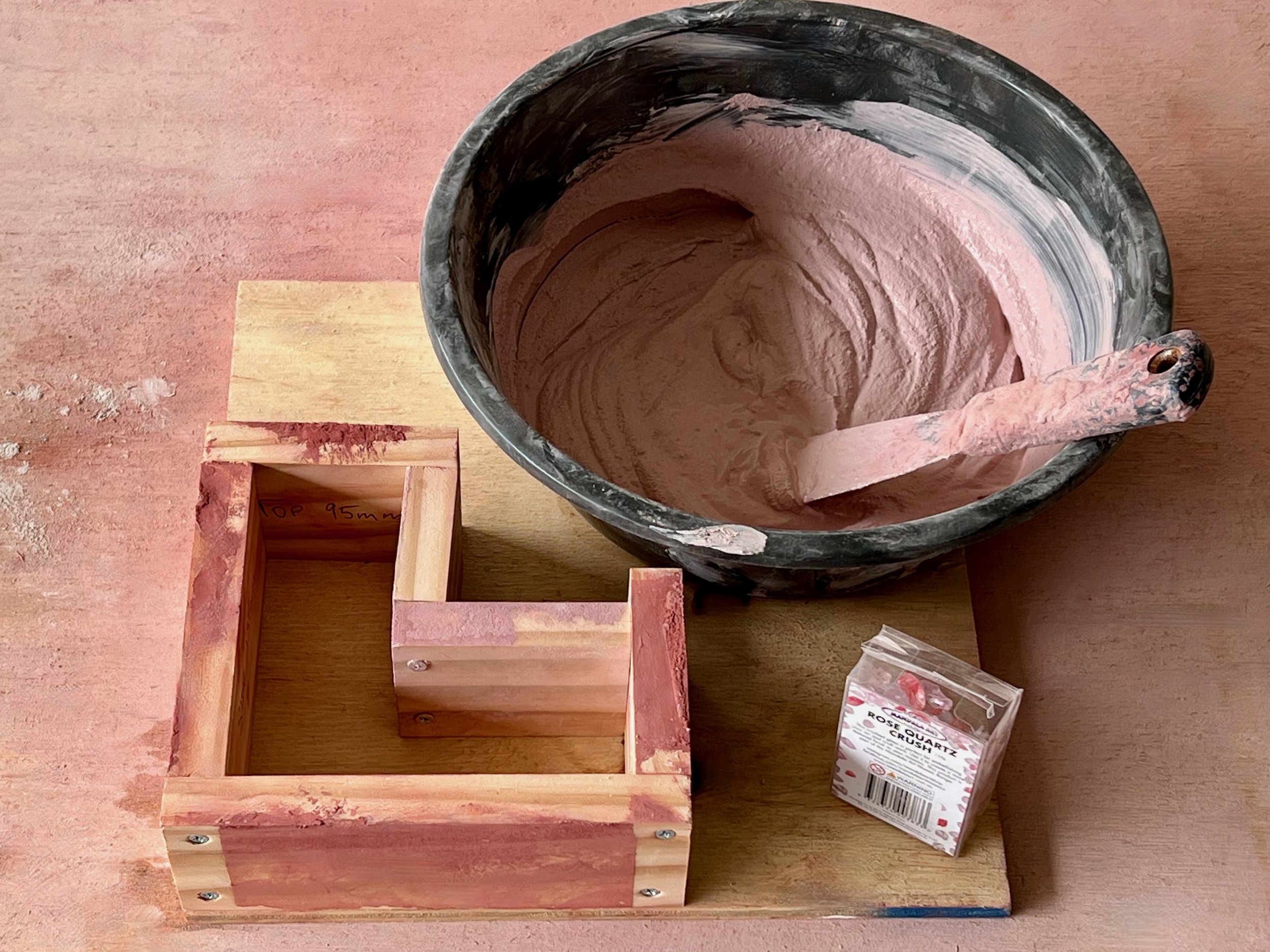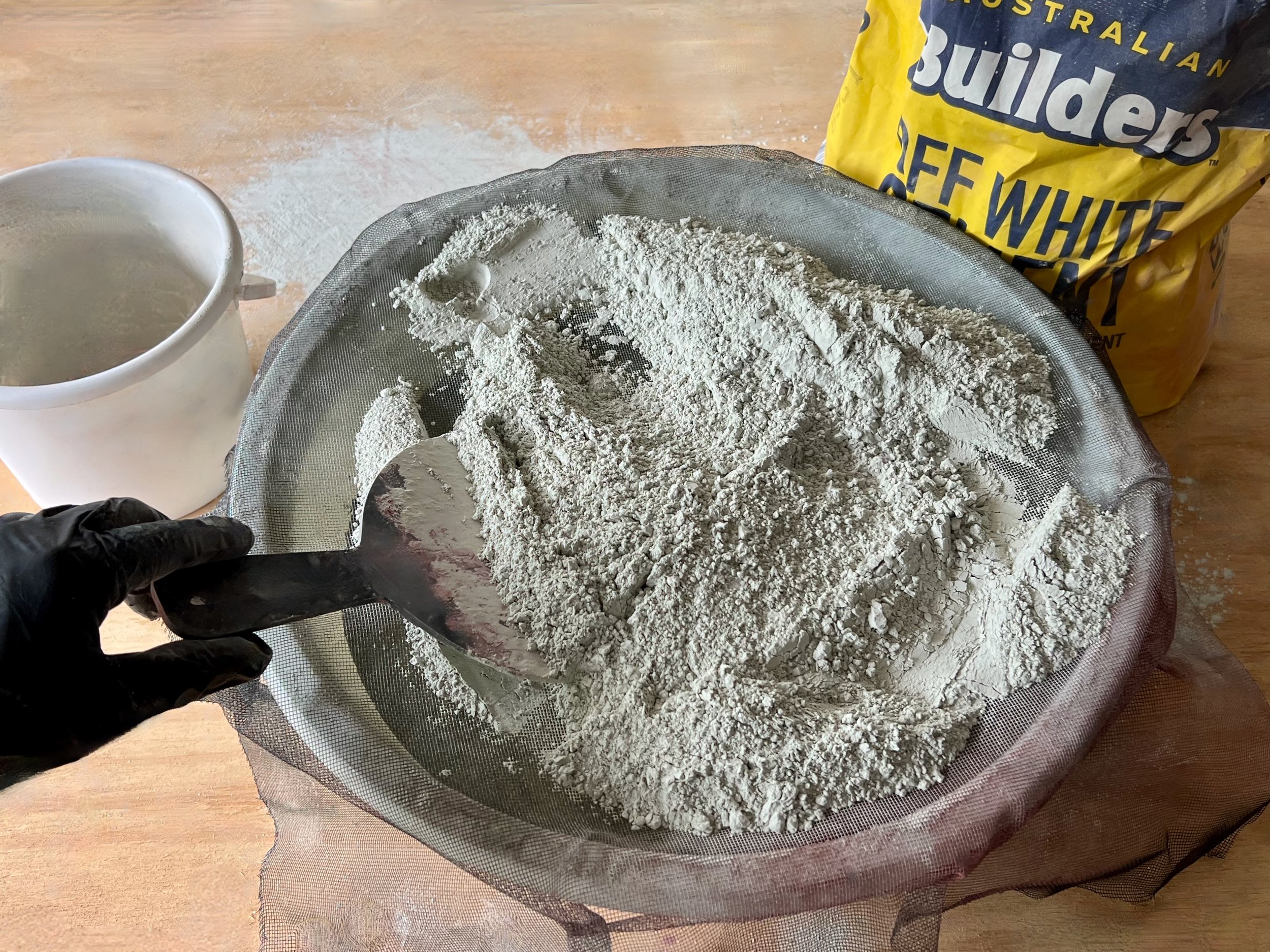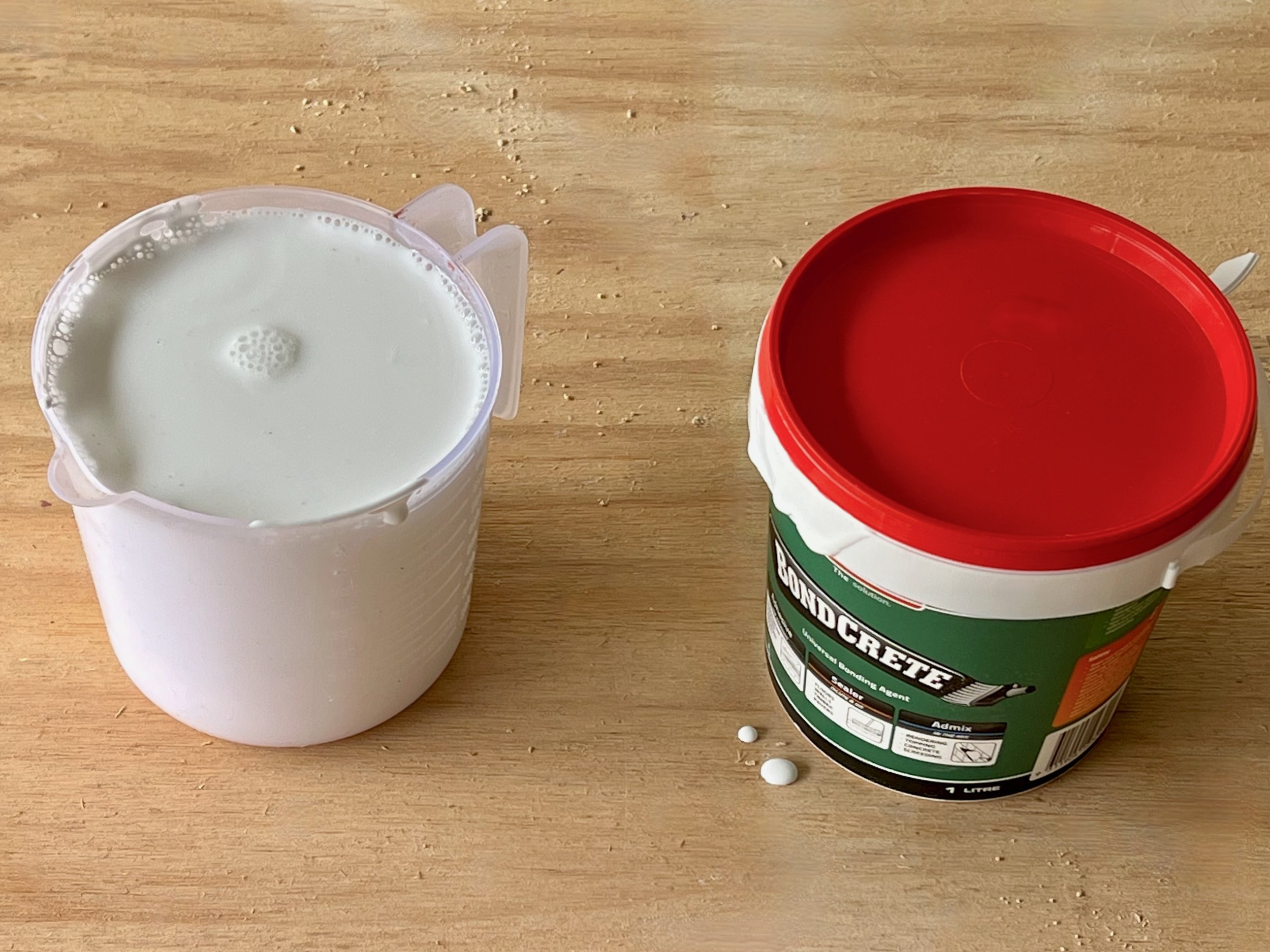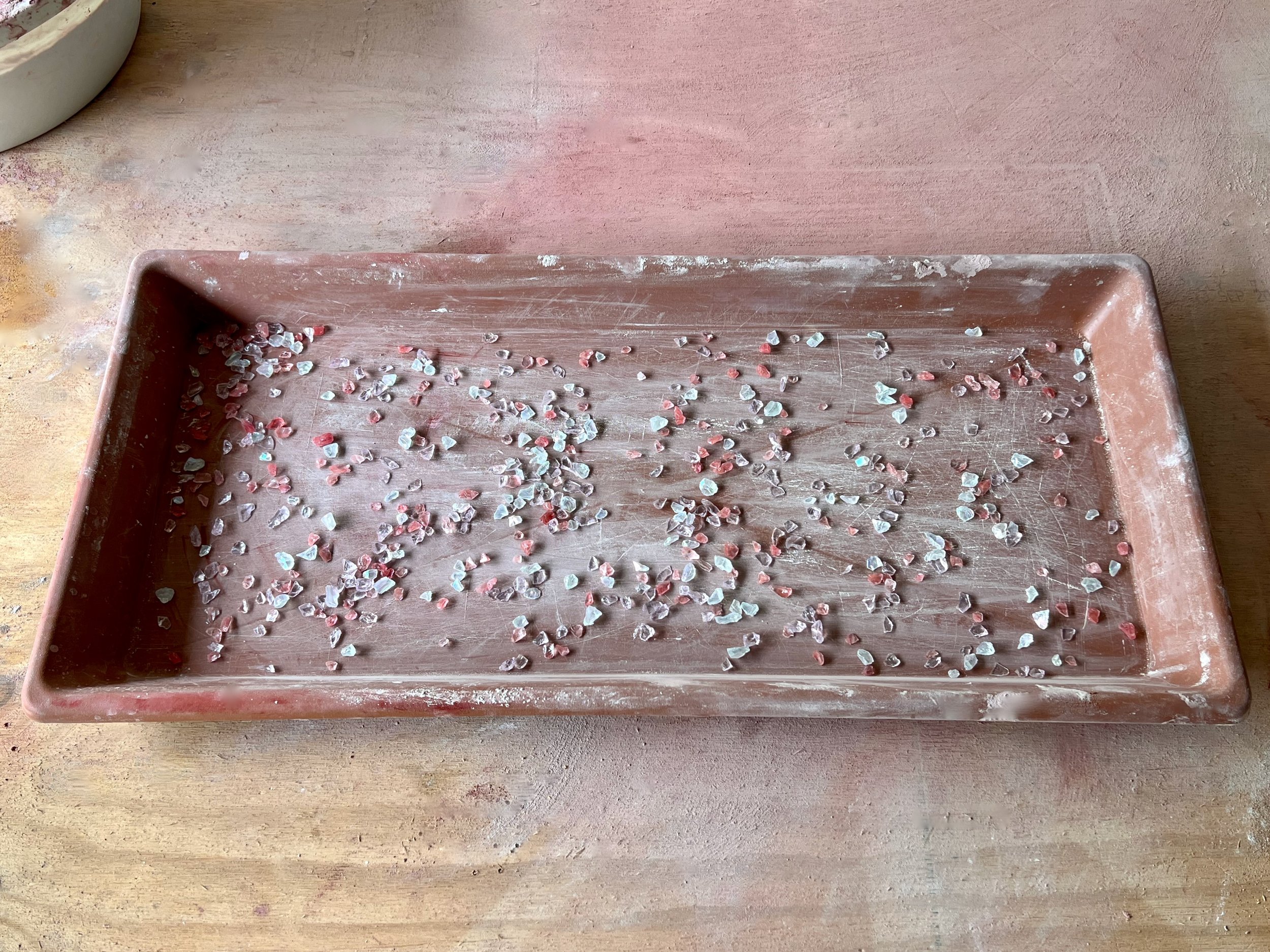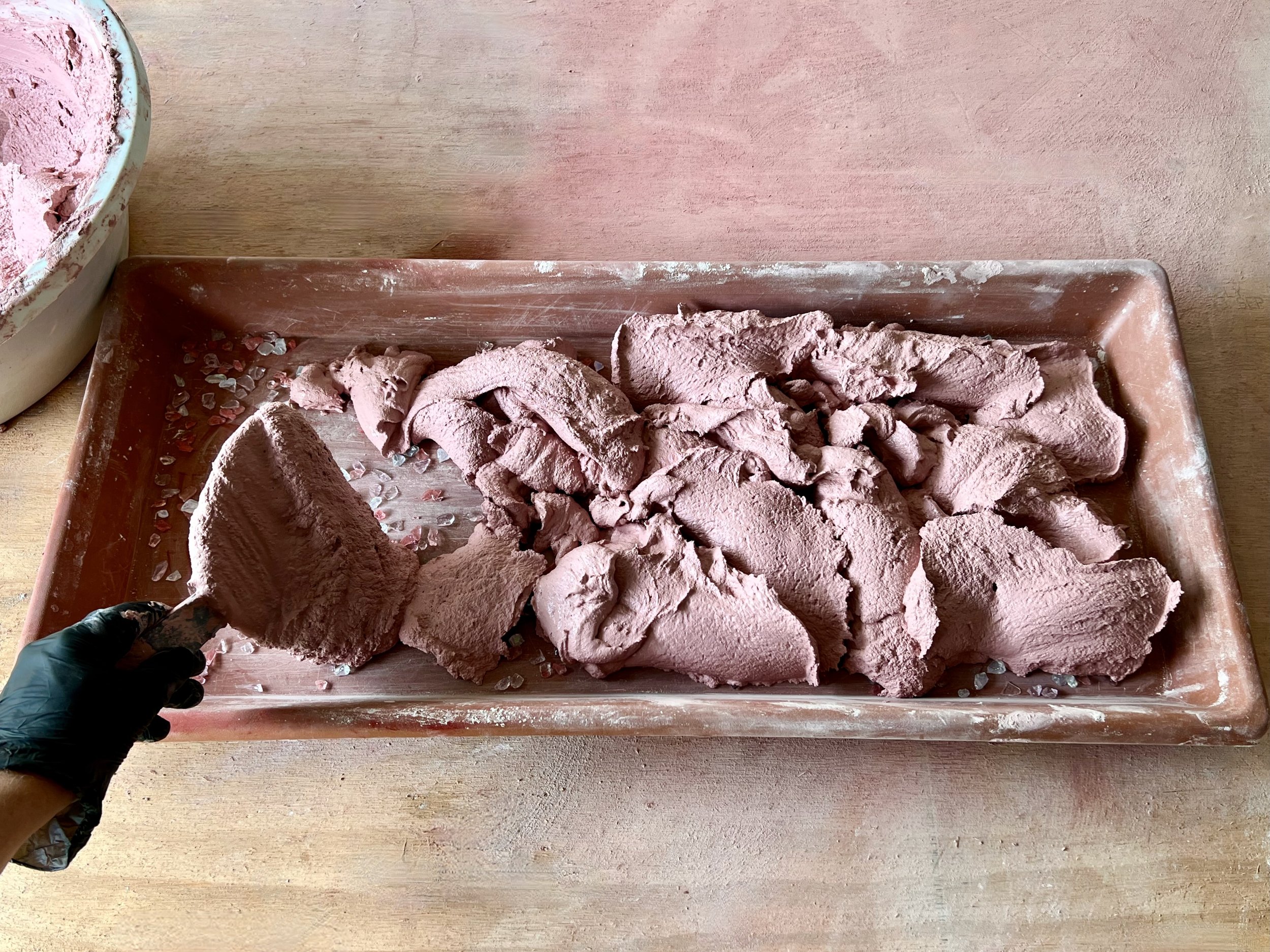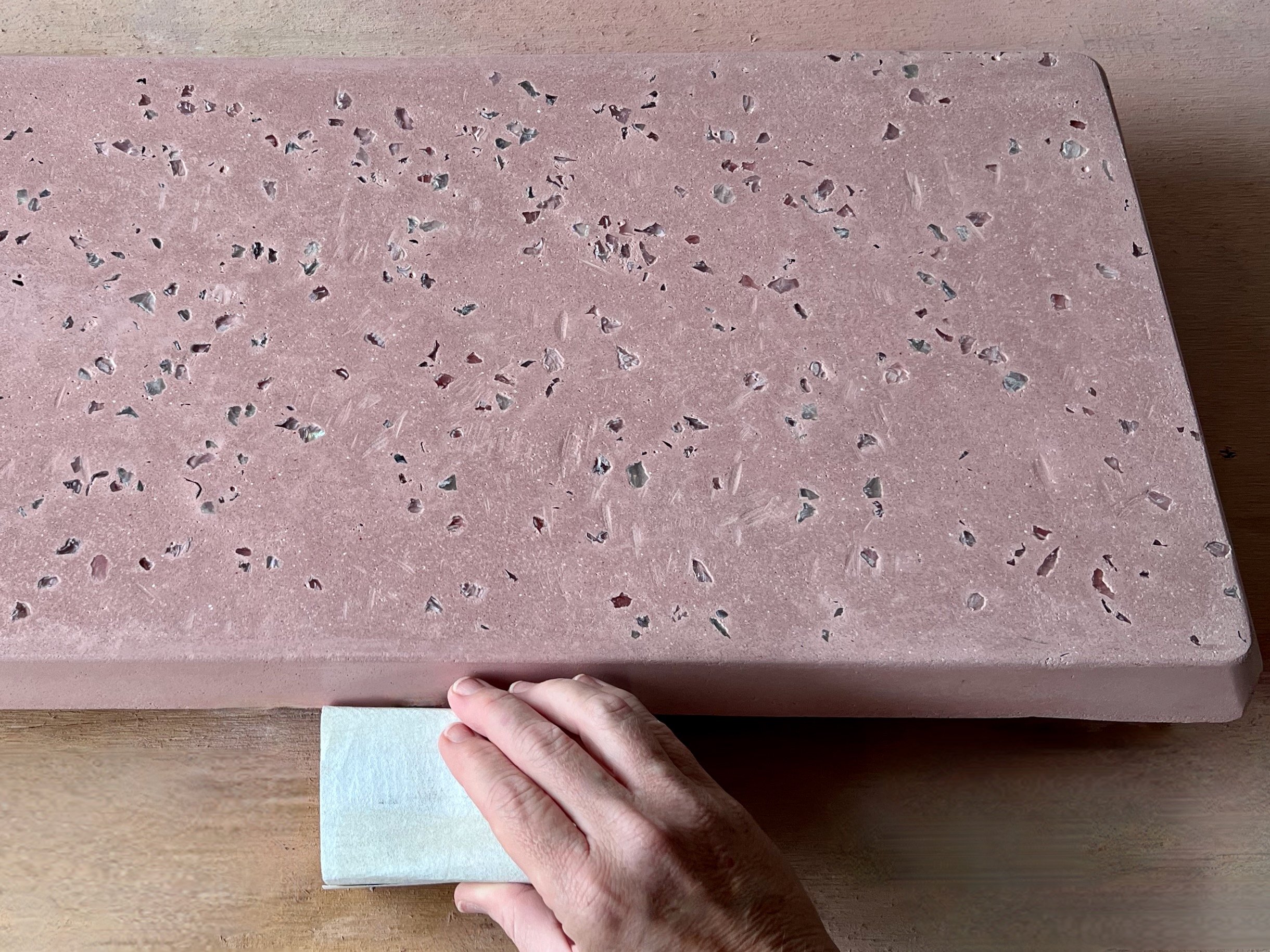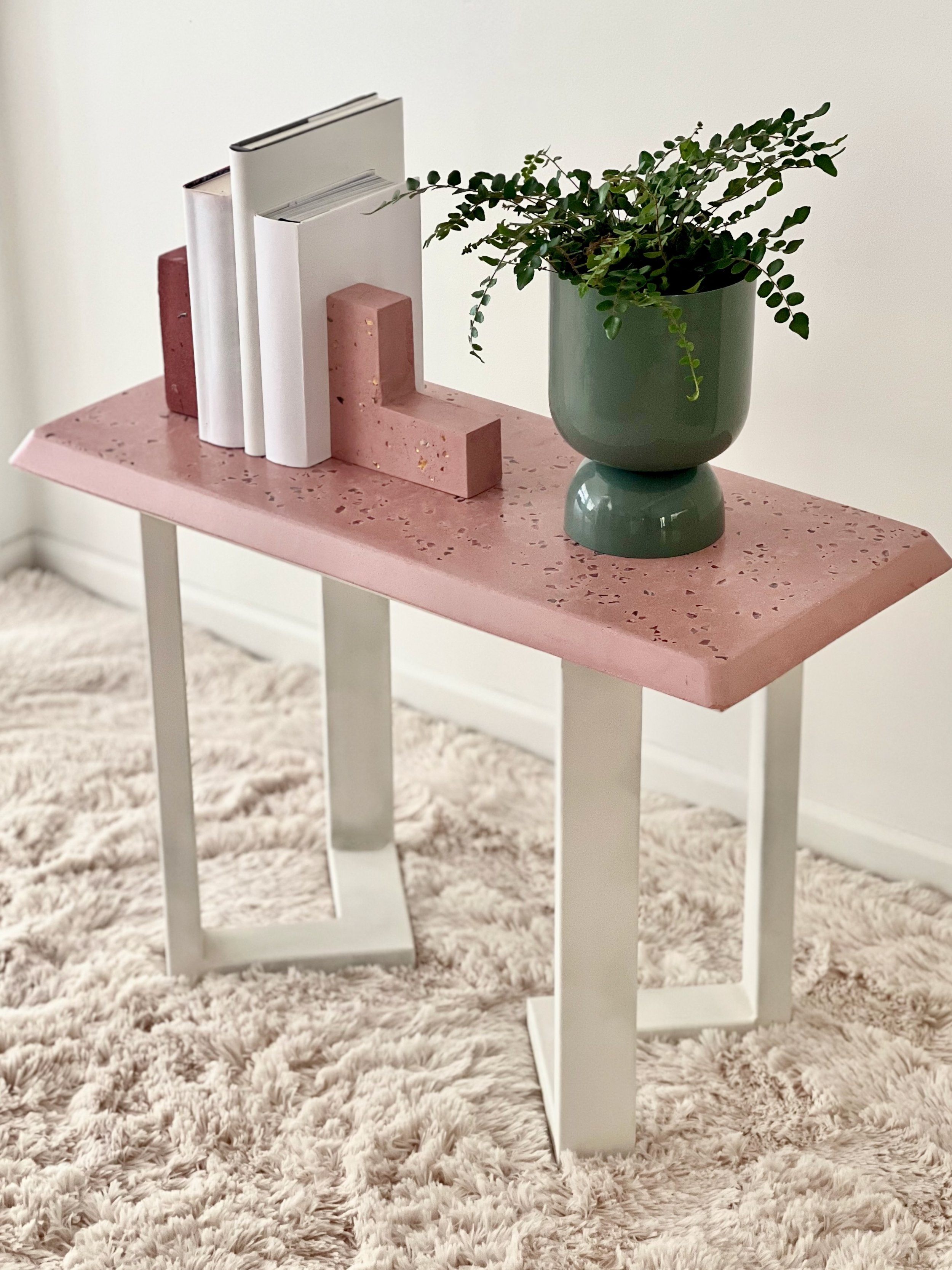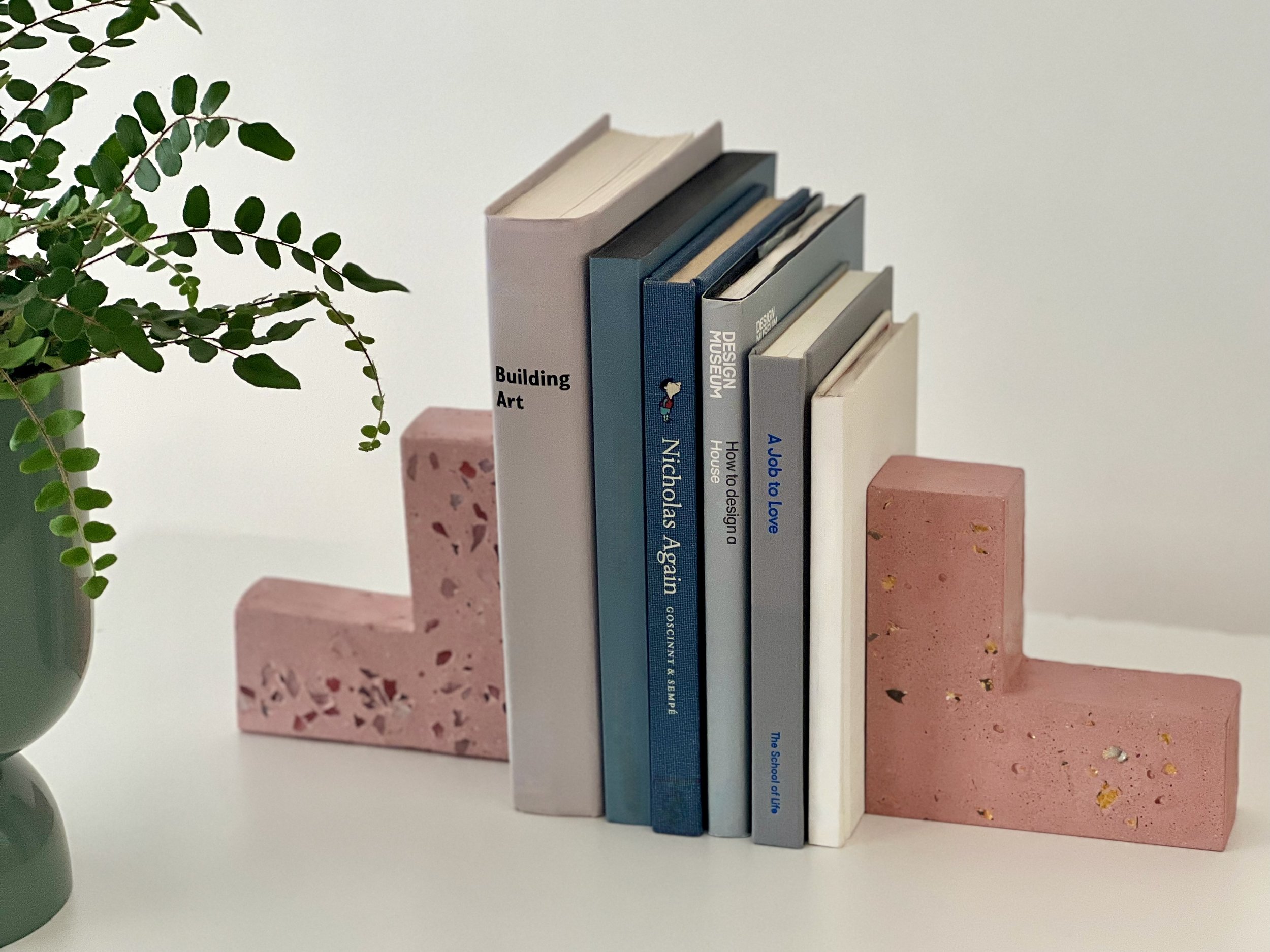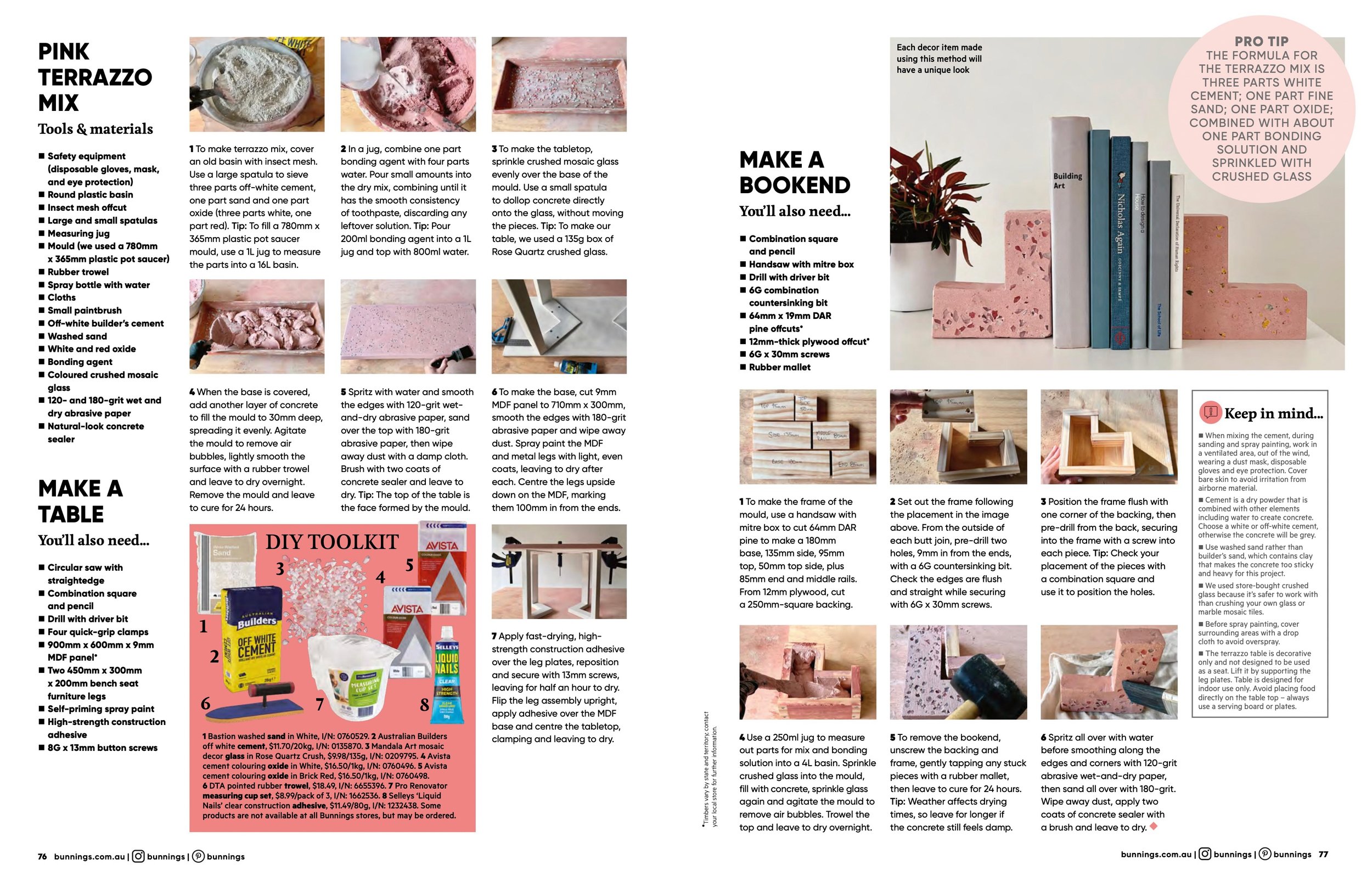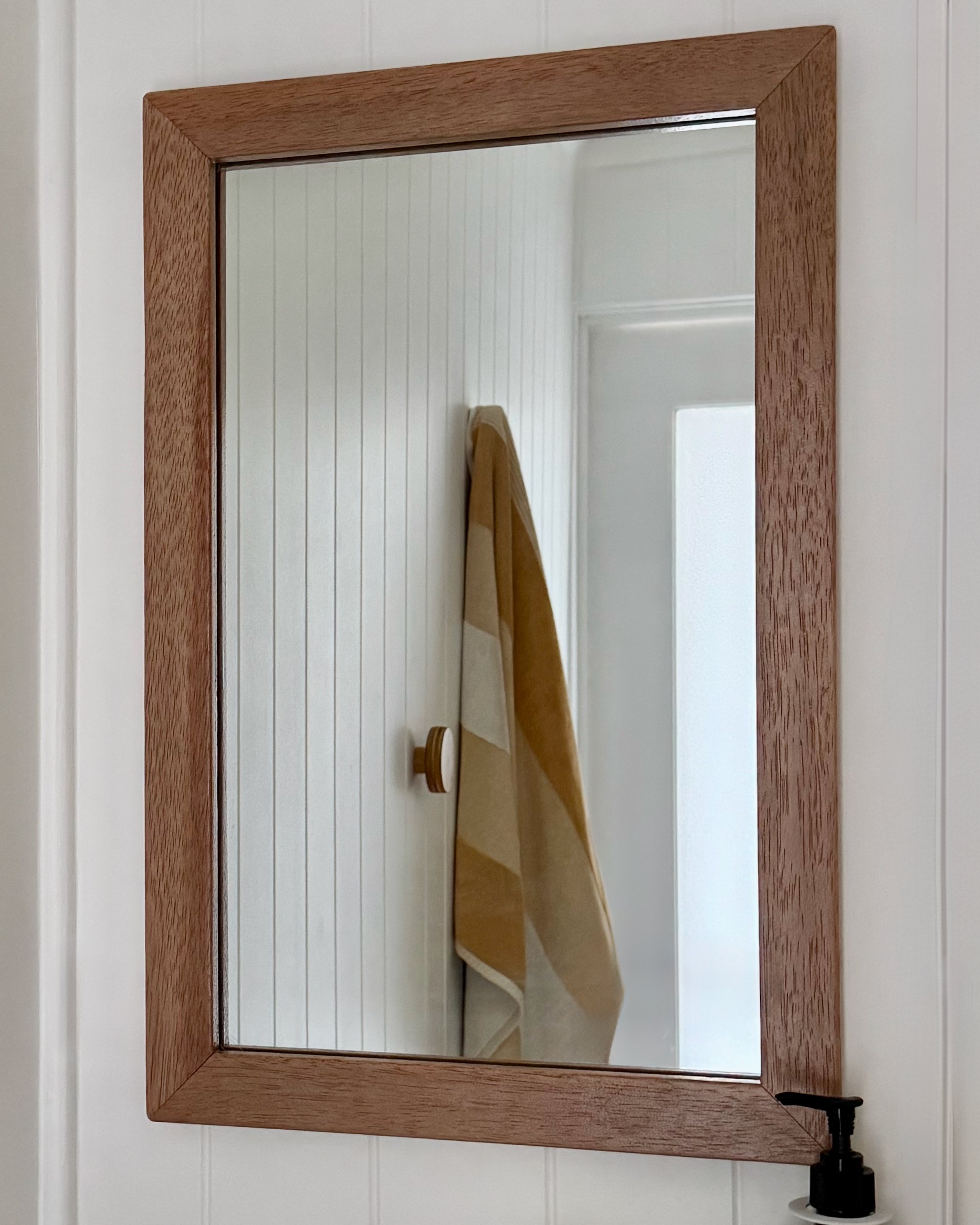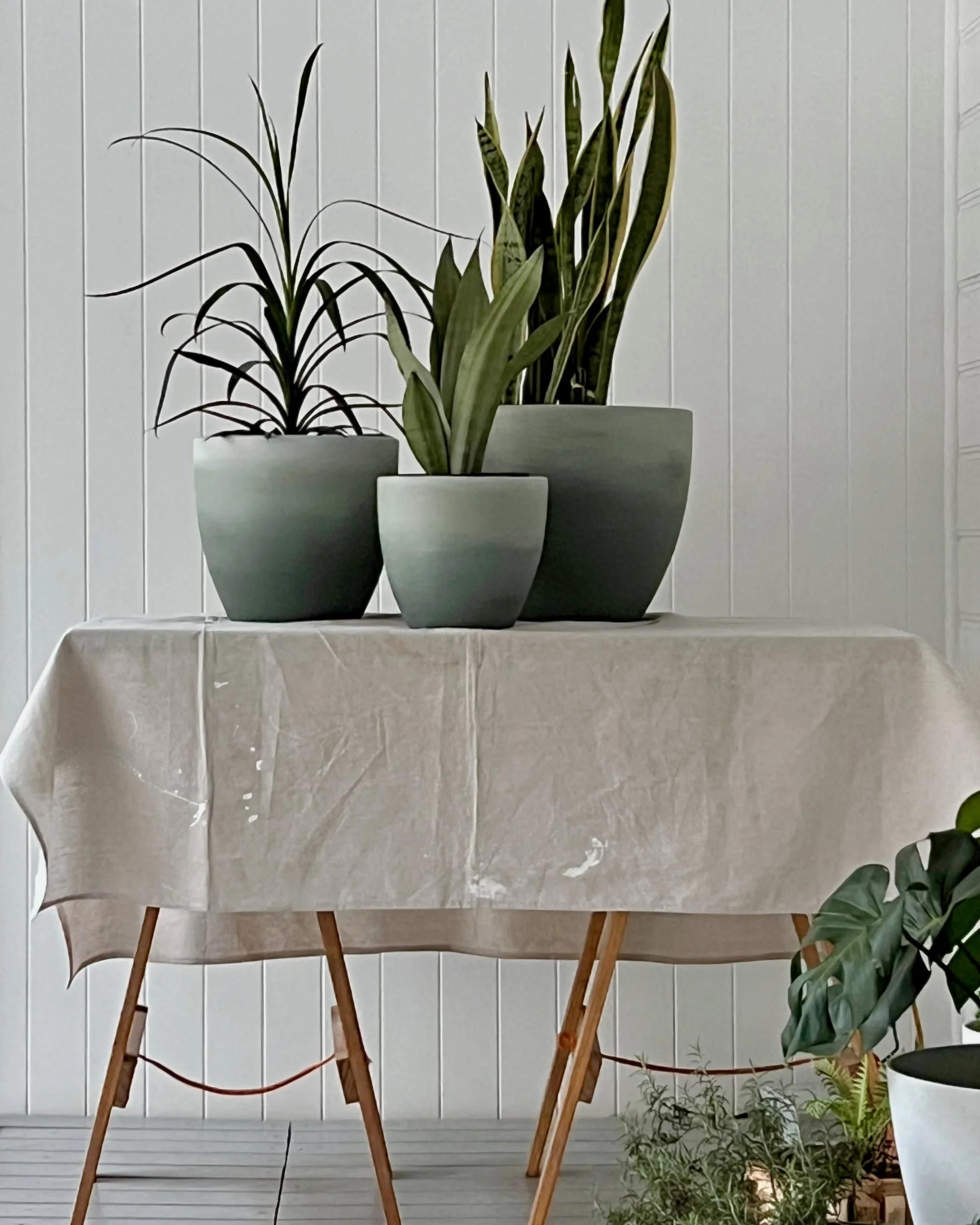Handmade Terrazzo
Alun Machin
Terrazzo is so-hot-right-now for furniture and homewares that I decided to try making it myself. I started by working out a standard formula that can be whipped up and poured into various moulds.
Pink terrazzo? Why not?
It’s achieved by mixing red and white oxide, but you could swap these for other cement colourings.
“While traditional terrazzo is made with marble chips, I’ve used store-bought crushed quartz that has already been tumbled so there are no sharp edges and it’s easier to work with”
The magic formula for my terrazzo mix is…
three parts white builder’s cement
one part fine, washed sand
one part oxide cement colouring
one part bonding solution
TIP Adjust the volume of mixture by simply changing the size of the measuring vessel for bigger or smaller parts.
Materials for the mix include an off-white cement (instead of the more common grey) as it makes up a lighter mixture. I’ve also used washed sand, rather than builder’s sand, which contains clay that can make the mixture sticky and heavy.
TIP Note that cement is not concrete – it’s a dry powder that is just one ingredient the makes up concrete.
To sieve the dry contents, I covered a round plastic basin with insect mesh and used a spatula to push through the dry cement, sand and oxide.
TIP Adjust the oxide mix for different tones. This mid-pink colouring is made up of three parts white and one part red powder.
In a jug, I combined one part Bondall Bondcrete as a bonding agent with four parts water…
… and poured small amounts into the dry mix, combining it into the smooth consistency of toothpaste.
I used a spatula to combine small amounts, but a drill with a paint mixer to combine a larger quantity, working quickly to keep it from hardening.
Then I sprinkled rose-coloured quartz crushed glass evenly over the base of the mould…
…. and dolloped on the mixture, trying not to move the pieces while covering the base and filling the mould.
The top was sprinkled with more crushed glass, then I lightly smoothed over the surface with a rubber trowel, agitated the mould to remove air bubbles and left it to dry overnight.
TIP When the terrazzo is tipped out of the mould, the smooth base of the piece becomes the top. Don’t over-agitate the mould as the mixture can get in under the crystals and ‘swallow them’ so they don’t stay on the surface.
I gently flipped the terrazzo out of the mould onto a flat surface and left it for another day to cure. I sanded along the slightly rough edges with 180-grit wet-dry abrasive paper, spritzing the surface lightly with water to help manage the dust.
TIP If a layer of mixture has dried over the crystals and they have been ‘swallowed’, sand it off with wet-dry abrasive paper or use an angle grinder.
After wiping away the dust with a damp cloth, I brushed on two coats of Betta TileCare Natural Look Sealer for a lovely matt finish.
To make a small side table, I measured out the magic formula mixture into16L round basin, using a 1L jug per part. I used a Northcote Pottery 780mm x 365mm plastic planter saucer for the mould, with one box of rose quartz crushed glass.
To make bookends, I measured out the formula with a 250ml jug and used half a box of quartz crushed glass, mixing some gold with the rose.
For specific instructions on how to make the side table and bookend moulds, tap through to the Bunnings Magazine where this story originally published.
Loving the idea of making your own terrazzo?
TAG ME on your project and follow more of my DIY journey on Instagram for tool tips, home improvements and simple building tutorials.

